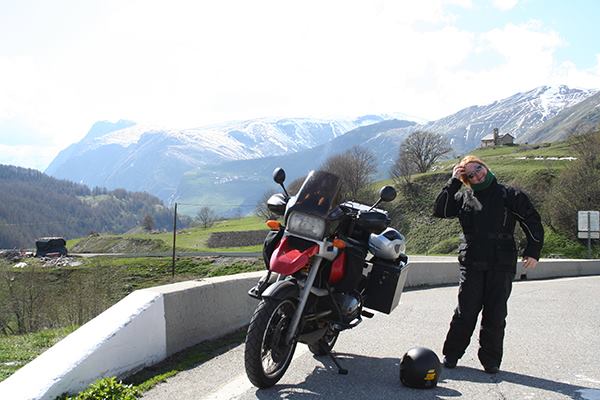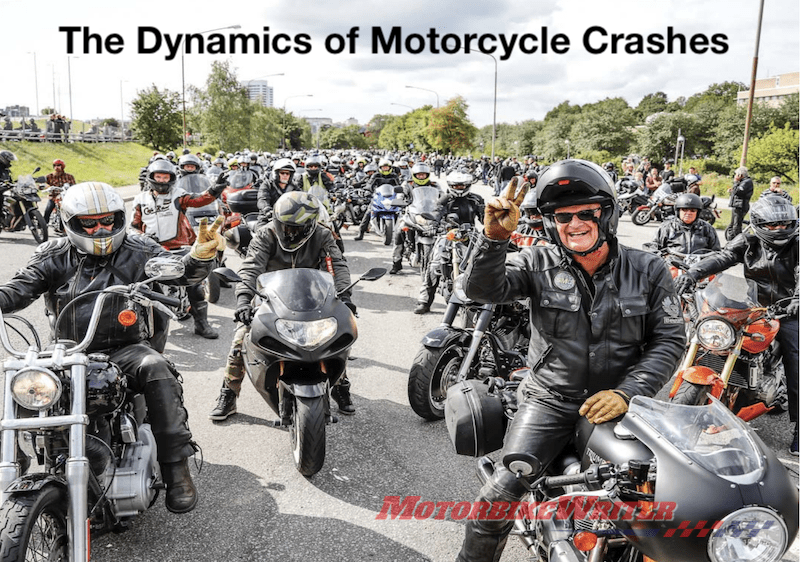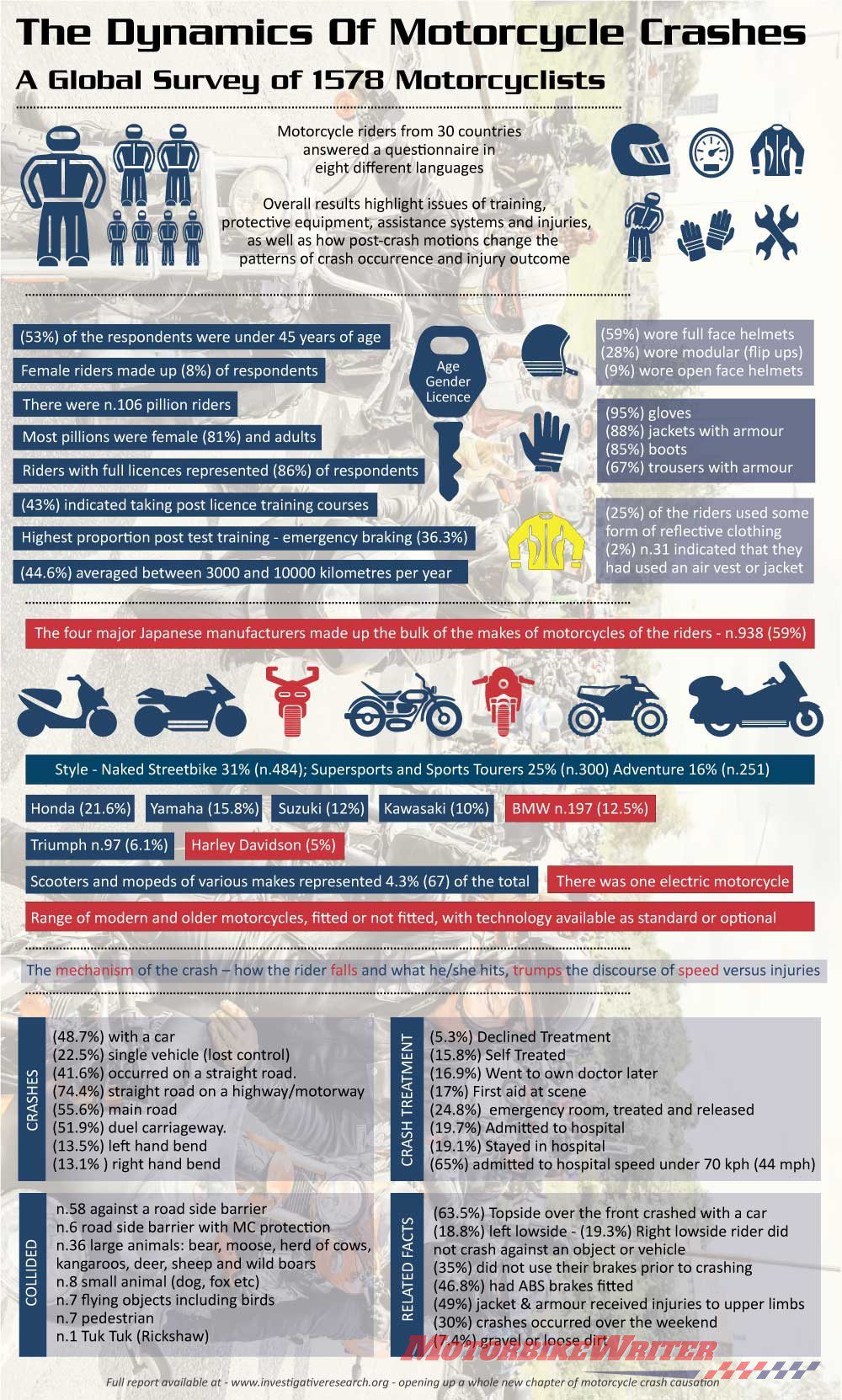Speed is not necessarily linked to the severity of injuries in a motorcycle crash, according to the first global rider report on motorcycle crashes.
The worldwide study makes a mockery of anti-speed campaigns such as “Every K over is a killer” and the overly simplistic “Speed kills”.
Some 127 riders from Australia last year were among 1578 from 30 countries who participated in the research, rather than academics simply studying data.
The authors of The Dynamics Of Motorcycle Crashes : A Global Survey of 1578 Motorcyclists — all of whom are motorcyclists — say their findings show that “orthodox motorcycle accident analysis” appears to be “looking the wrong way”.
“Typically, motorcycle accident studies have identified human error as the major cause of collisions,” they say in their synopsis.
“Other reasons considered are the lack of training, sports bike riders taking unnecessary risks and riding at high speeds which has been used as a measure for severe injuries.”
Speed not linked
But one of the most important findings is that the speed of a motorcycle involved in a crash is only randomly linked to the seriousness of injuries.
“The speed of the motorcycle when it crashes with another vehicle, road infrastructure or an object or animal does not necessarily determine the severity of the injuries of the motorcyclist,” they say.
“This finding is important because it allows analysts and researchers to focus their attention on what the evidence in this study provides, which is the mechanism of the crash (the trajectory of the rider post-crash and what he/she hits) has far more importance than speed in terms of the type and the severity of injuries.
“In fact, the post-crash motion “topside” occurred in 63% of those cases where the rider collided with a car.”
(By “topside”, they mean when the rider is separated from the bike and goes over the front.)
“In terms of injuries, this type of trajectory dominates both the range of type of injuries and the severity.
“This is an area of research that needs further attention, indeed, the report recommends further research that has been drawn out from the conclusions.”
We hope the authorities pay some attention to this report, rather than making knee-jerk legislation responses to the latest crash statistics.
Riders surveyed

The authors say they received a good response from 126 Australia riders.
They say riders who replied came from a varied age range, motorcycling experience, as well as depth of skills and training.
“The new research presented in the report, most importantly involved riders bringing their personal experience and their expertise beyond that of simple academia,” the authors say.
“Riders understand motorcycling in way quite different than that of academia, where statistical analyses of large databases such as police reports and hospital records has displaced research that requires in depth crash scene investigative knowledge.
“The riders’ crash details which were provided through the responses to the questions as well as the comments they offered, brought those stories of personal experiences which included treatment of their injuries, pillion riders and the dynamics of their crash, that in their own words allowed a deeper insight into the dynamics of crashes and the circumstances.
“These could not have been captured in a usual ‘tick box’ survey.”
Authors are riders
The authors say the fact that they are all motorcyclists s important as they are “aware of the dynamics of riding a motorcycle with the potential risks riders face”.
They say this helped them to analyse the responses better as they understood the issues riders face in traffic and out on the road.
“Particular focus most relevant to motorcycles included the use of protective equipment and assistance systems, in particular Advanced (anti-lock) Braking Systems (ABS),” they say.
It follows a 2016 study by UK motorcycle road safety researcher Dr Elaine Hardy into ABS-equipped bike crashes called “Effects of ABS in motorcycle crashes”.
Her study found that simple stupidity, irresponsibility and bad luck were often overlooked as causes of a motorcycle crash.
More segments of this latest report will be published and analysed by Motorbike Writer over the next few days so stay tuned.
Meanwhile, here is an infographic that outlines the survey respondents.
Authors:
- Elaine Hardy, Motorcycle Research Analyst, UK;
- Dimitri Margaritis, Research Associate, CERTH/HIT, Greece;
- James Ouellet, Hurt Report co-author, USA; and
- Martin Winkelbauer, Senior Researcher, KFV, Austria.



